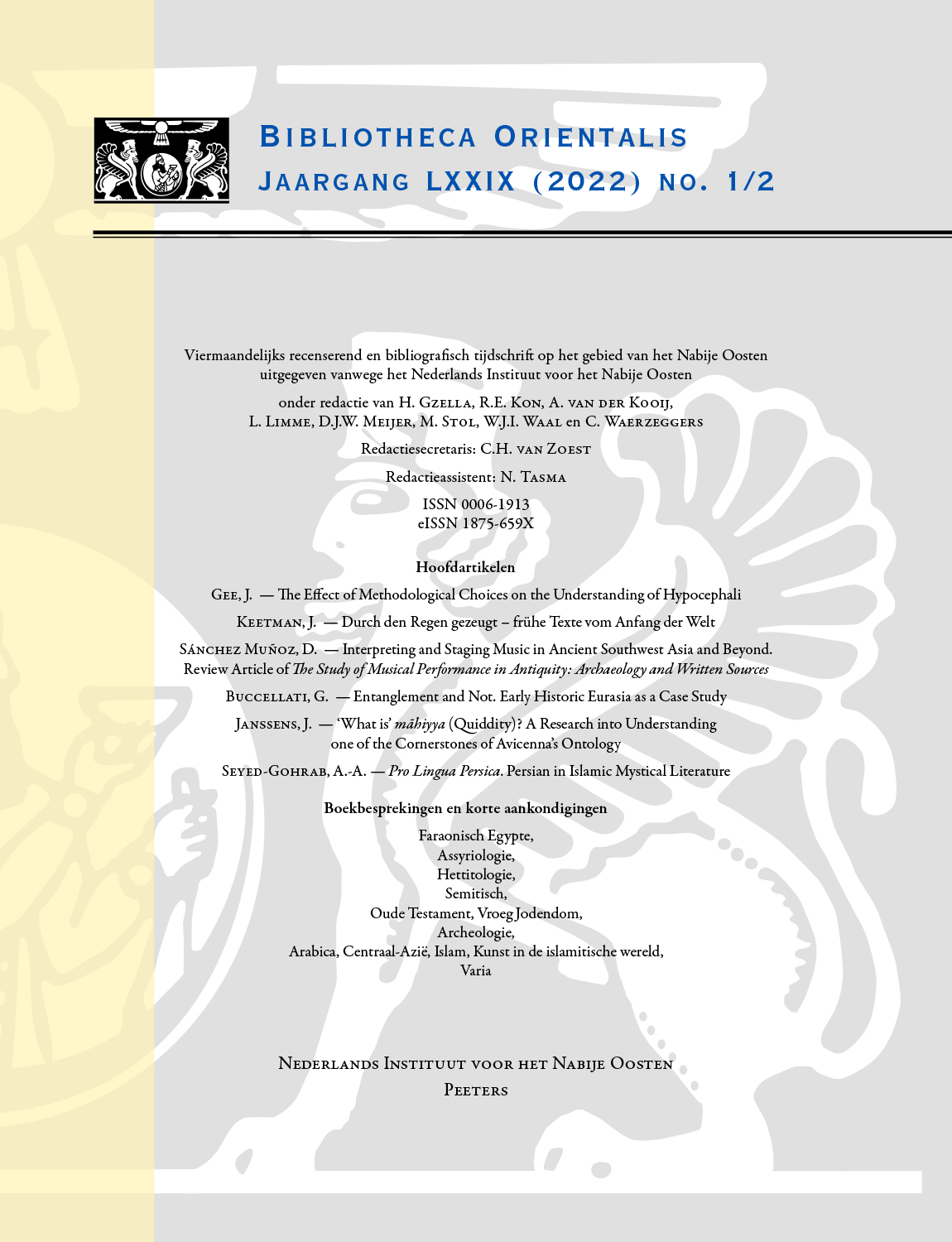 previous article in this issue previous article in this issue | next article in this issue  |

Preview first page |
Document Details : Title: Recent Discussions about the Chronology of the Middle and the Late Bronze Ages in the Eastern Mediterranean: Part II Subtitle: The End of High Chronology in the Aegean and the Levant? Author(s): BIETAK, Manfred Journal: Bibliotheca Orientalis Volume: 78 Issue: 3-4 Date: 2021 Pages: 282-318 DOI: 10.2143/BIOR.78.3.3289914 Abstract : This article deals with the conflicting debate about the chronology of the Middle and the Late Bronze Ages in Egypt, the Aegean and the Levant. Radiocarbon chronology and historical/archaeological chronology that depend to some extent on the Egyptian absolute chronology seem to produce results which are 100 to 150 years apart. The debate was not always fair and the differences in dating were never convincingly explained. Yet, a flood of articles and books supporting the high Aegean and Levantine chronology, based solely on radiocarbon dating, seem to have tilted the weight of public opinion in favour of a high chronology by fixing the eruption of Thera to the second half of the 17th century BC. These measurements were the result of highly polished calibration curves, based largely on decadal and semi-decadal tree-ring measurements, which have distorted the resolution of 14C dating. For the past three years, however, a pioneering study by the Arizona University Laboratory has analysed the 17th and the 16th centuries BC on the basis of the annual tree-ring measurements of bristlecone pine, German oak, and Irish oak. The Arizona lab results demonstrated the possibility for a new date range for the Thera eruption nearly a century later, sometime between 1570 and 1510 BC. The new results buttress the historical/archaeological dating, although due to wiggles in the calibration curve the former radiocarbon measurements allowed the date of the Thera eruption to extend into the 16th century as well – a result that was ignored by the adherents of the high chronology. Recently, the results from the Arizona lab have been confirmed by measurements at the Eidgenössische Technische Hochschule Zurich and Mannheim laboratories and are now included in the IntCal 20 calibration curve against which recalibration of previous Thera relevant dates all display probabilities in the 16th century BC. This article will put forth the archaeological and stratigraphic reasons for why the former 14C dates for the Middle Bronze Age were too high when samples were taken from the tell-stratigraphies. This article only deals with the most important publications on high Aegean and Bronze Age-Chronology since the output in print and on the internet is not only abundant but very repetitive. |
 |


